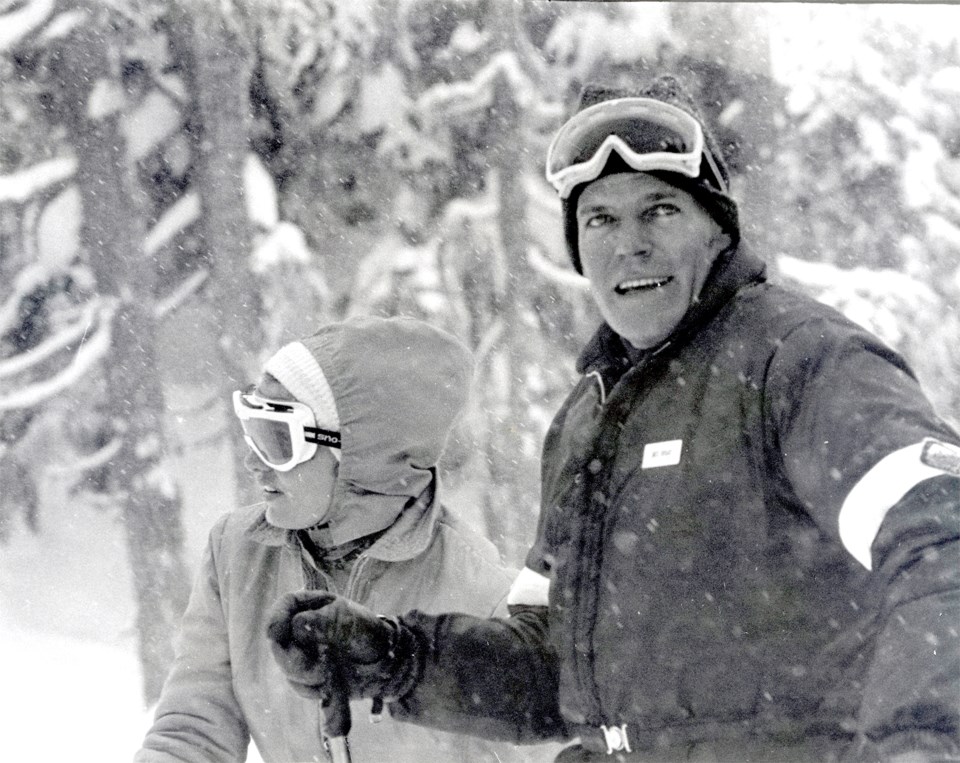In the early years of lift operations on Whistler Mountain, the end of the ski season was sometimes determined not by the conditions or lack of snow, but by a lack of skiers. For some skiers, the end of the Easter holidays marked the time to put away their skis and start pulling out tennis rackets, even if the chairlifts were still running. In order to keep people coming to the ski area through May, Whistler Mountain hosted a Ski or Spring (the name depended on the year) Carnival over the May long weekend.
According to Hugh Smythe, who began working for the lift company in its first season, this effort to keep skiers in the area was driven in large part by Jack Bright, who arrived at Whistler Mountain as the new area manager in early 1967. While the mountain manager Dave Mathews was responsible for everything that moved on the hill, Bright was responsible for everything else, including marketing.
The first Carnival took place in 1967, though there is little information about it in the archives apart from a mention in the April 22, 1967 edition of Ski Trails, advertising “a razzle-dazzle weekend lined up that will include queen candidates, races and a variety of hijinks.” By the spring of 1968, however, the publication of Garibaldi’s Whistler News (GWN) provided much more detail about the event.
The Ski Carnival of 1968 began on Friday, May 17 with a “ski cruise” from Vancouver to Squamish up the Howe Sound with entertainment and refreshments. From Squamish, skiers were transported by bus to Whistler Mountain to prepare for the events of Saturday, which included an obstacle race, a gelandesprung contest (while gelandesprung is a type of jump in skiing, it was described in GWN as “people on skis will be jumping off things”), a fashion show, and a Carnival Ball in the Roundhouse. The Ball had a dress code of “informal après ski wear,” with attendees having to make their way over from the top of the Red Chair.
On Sunday, the World Championship Inner Tube Race was followed by a “fairly legitimate, though easy” slalom race, and a barbecue at one of the lakes in the valley. After a morning of skiing on Monday, skiers were encouraged to attend the rodeo in Mount Currie hosted by members of the Lil’wat Nation. The schedule for the Spring Carnival of 1969 was very similar, though the cruise appears to have been replaced with sailboat races.
Hosting events like the Carnival was just one of the many ways skiing on Whistler was advertised during Bright’s tenure. He and Lynn Mathews published GWN three to four times a year, and distributed it as widely as possible. Bright also attended and sent employees to meetings with ski clubs and tour operators, as well as ski shows across North America. He even hired Jim Rice to make a ski movie on Whistler Mountain so they had something to show at these meetings and shows.
On Sundays, ski instructors would put on their uniforms to show ski films in Roy and Jane Ferris’ living room at the Highland Lodge so guests could see what the coming week might look like, and in 1968, convinced that the ski school needed a big name to attract more skiers, Bright and Smythe went to Tod Mountain (today Sun Peaks) to persuade Jim McConkey to be the new ski-school director at Whistler.
In the mid-1970s, Bright and his wife Ann developed the Whistler Inn and JB’s Restaurant (today Roland’s), which they continued to operate after Bright left the lift company.
Although there is no official Ski or Spring Carnival hosted on Whistler Mountain today, decades of marketing efforts, beginning with those of Jack Bright and other early lift-company employees, ensure few skiers or riders are unaware the ski season goes into May.




